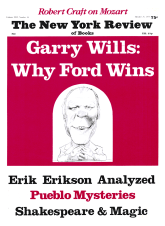The result of a decade’s scholarship, this study of the development of a national army during the first twenty years of the United States offers valuable information on the period. Kohn, writing from an anti-militarist point of view, argues that the Federalists conspired to create a “standing army” on the European model. Even when the nation was at peace and the Continental Army officially disbanded, the military remained the largest single cost of the new government, and in 1794 the 15,000-man mobilization to suppress the Whiskey Rebellion imposed enormous financial and logistical burdens.
Kohn identifies a group of Continental Army officers as the active sponsors of a standing army; they included the financier Robert Morris and Alexander Hamilton. Hamilton was the leading figure, a fact less explicable by an arcane “conspiracy” than by his desire to maintain domestic order, preserve the national system of finance and commerce he was setting up, and inhibit border incursions by hostile powers. Indeed, Kohn’s descriptions of the Indian wars, recurrent border clashes with the British, fears of a French invasion during the Haitian revolution, and assorted domestic plots and rebellions are among the most valuable parts of his book and justify to some degree the national army proponents. Kohn acknowledges, for example, that Shay’s Rebellion in 1786 could not be handled by the local militia, who, in fact, were among its leaders, while Jefferson, the arch-opponent of Federalism and militarism, inaugurated the first military academy and developed the Army Corps of Engineers. Kohn’s thesis will provoke controversy; his research commands attention.
Coffey, author of Agony at Easter (1969), Imperial Tragedy (1970), and Lion by the Tail (1974), wastes no time with tales about somebody’s home brew exploding in the basement, devotes only one sentence to the Untouchables, and gets right down to business: Prohibition as business, and the politics of Prohibition. On the fringe are nightclub operators and rumrunners; at the center are national churchmen like the adulterous Bishop Cannon, crooked fundraisers for the Anti-Saloon League, Mayor Big Bill Thompson of Chicago and his underworld counterparts, Harding’s corrupt attorney general, and industrialists such as John D. Rockefeller who thought dryness would increase workers’ productivity, as well as the distillers and bootleggers who bought up the legislators in Washington.
The enforcer of Prohibition, Assistant Attorney General Mabel Willebrandt, having withstood the wet lobby, retired to become a lobbyist for California grape growers; FDR undermined his New York Republican opponent by coming out for repeal; the Women’s Organization for National Prohibition Reform rallied patrician ladies to end the farce; and so “the wet tide rose,” but not before thousands a year were given “the death penalty” willy-nilly for drinking bootleg because the government insisted on poisoning industrial alcohol. The story is supposed to be sad and funny, and it is, while the intricacies of municipal deals and demagogic byplay make this book a handy reference work for the political history of the period.
This Issue
October 16, 1975



